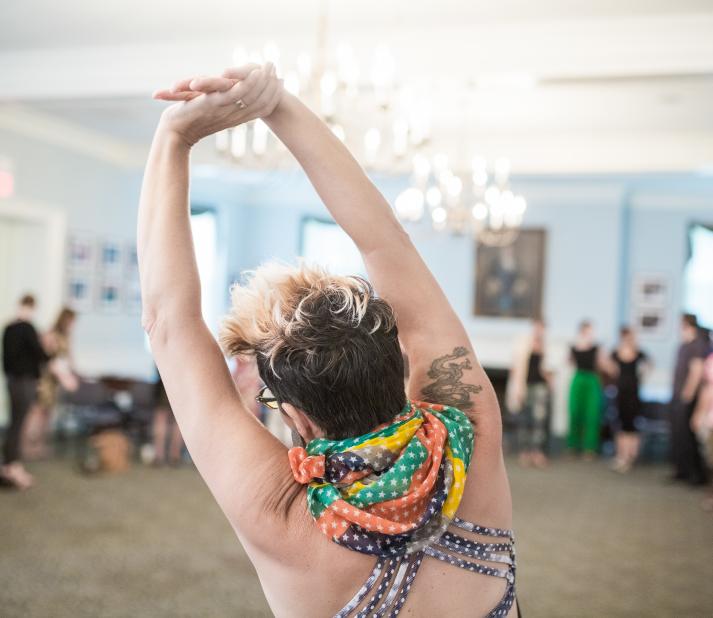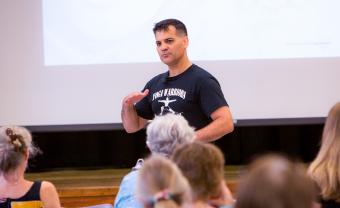Nancy Waring, professor and founding director of Lesley’s Mindfulness Studies graduate programs, explains how this 2600-year-old practice can help toward the creation of greater harmony.
“Mindfulness is a form of intelligence that promotes well-being. It’s a way of being that can optimize happiness and reduce suffering in our lives. It is basically a prescription that was set forth by Siddhartha Gautama, now known as Buddha. The Buddha is often referred to as a physician, and his teachings are often referred to as medicine,” she explains.
Among the fundamental principles of mindfulness are being present to each moment, practicing compassion for ourselves and others, recognizing our interdependence, and gratitude. Meditating helps us develop these ways of being through forms of practice that all have to do with present moment awareness.
1. Being in the present moment
We, humans, tend to dwell in the past or tell ourselves stories about the future. These habits of mind often lead to unhappiness and anxiety. Our dissatisfaction also arises from trying to resist naturally occurring change.
Mindfulness practice addresses this dissatisfaction. "We train our minds to be increasingly aware of the present moment, just as it is unfolding, without trying to make it different and without judging whatever is happening,” Nancy says.
Through meditation practice, we learn to notice our thoughts, emotions, and what’s happening in our bodies. It’s not about pushing away unpleasant thoughts or emotions. It's about acknowledging them without dwelling on them or telling ourselves stories about them.
2. Practicing compassion for yourself and others
Developing self-compassion is a necessary step toward developing compassion for other people. If we acknowledge that our self-judging thoughts are not productive, they’ll soften over time, Nancy explains. "So will our judgmental thoughts about others," she says.
The more we practice kindness toward others and ourselves, the more compassion will arise in us naturally. “We remember that everyone wants to be happy and everyone experiences suffering just like we do,” says Nancy, who has noticed her own attitudes shift over time. “I no longer get upset when I’m driving and someone cuts me off. I think, ‘Well, maybe that person is angry—which is a form of suffering—or has somewhere urgent to go.’”

